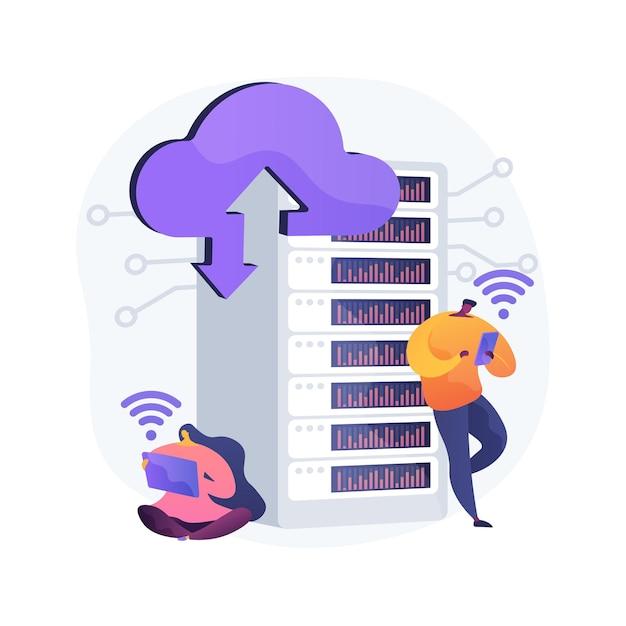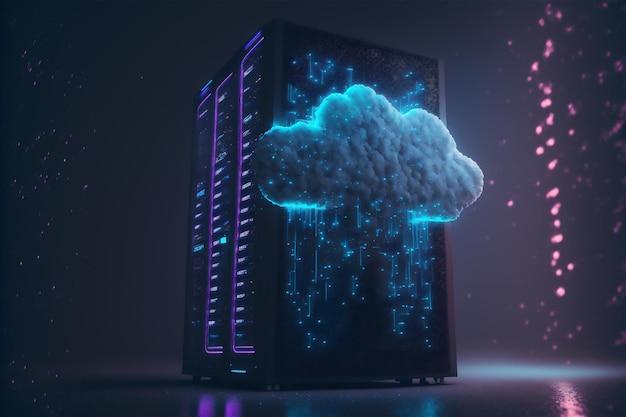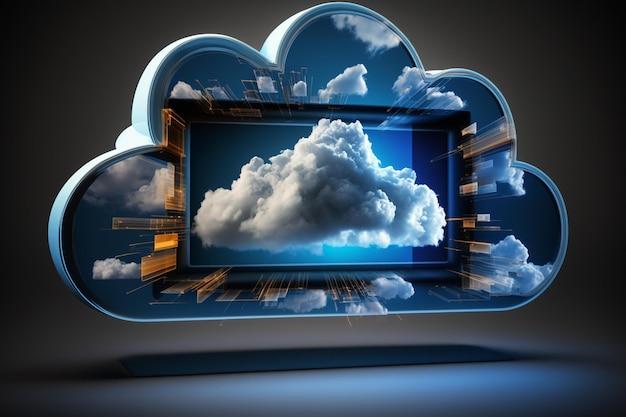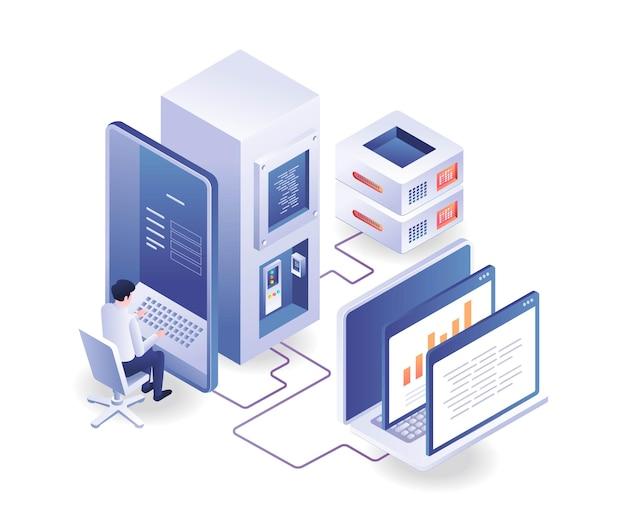As technology advances, the demand for more efficient and faster data processing has led to the development of innovative technologies such as cloud computing and quantum computing. With the rapid growth of data, the need to handle and process large volumes of data efficiently has become more pronounced. This has given rise to the need for more decentralized systems known as edge computing.
In the world of technology, edge computing is the new kid on the block. But what is edge computing, and how does it differ from cloud computing and quantum computing? In this blog, we’ll explore the concept of edge computing, its features and benefits, as well as how it relates to quantum computing.
So, what is edge computing? In simple terms, edge computing is a distributed computing paradigm that brings computation and data storage closer to the location where it is needed, reducing latency and improving performance. It is an extension of cloud computing, designed to address issues related to data transfer, latency, and bandwidth limitations.
Tesla, the electric vehicle manufacturer, has been at the forefront of edge computing. But is Tesla an edge computing company? We’ll uncover this in this blog post. We’ll also delve into the differences between edge computing and cloud computing, and how distributed computing compares to cloud computing.
Are you curious about some edge computing examples and quantum computing applications? In this blog post, you’ll discover how edge computing and quantum computing are related, and what it means for the future. Are you ready to learn more about the world of edge computing and quantum computing? Then let’s dive in!
Edge Computing and Quantum Computing
Edge computing and quantum computing are two cutting-edge technologies that have generated a lot of buzz in recent years. While they are distinct technologies, they are often discussed together because they both represent significant advances in computing power.
What is Edge Computing
Let’s start with edge computing. Edge computing refers to the practice of processing data near the edge of the network, where the data is being generated. This is in contrast to traditional cloud computing, where data is sent to a central server for processing.
There are several reasons why edge computing is gaining popularity. First, it reduces the amount of data that needs to be sent back to a central server, which can be expensive and time-consuming. Second, it can reduce latency, leading to faster response times for applications. Finally, it can improve security by keeping sensitive data closer to the source.
What is Quantum Computing
Now, let’s talk about quantum computing. Quantum computing is a revolutionary technology that has the potential to solve problems that are currently impossible for traditional computers. It is based on the principles of quantum mechanics, which allows particles to exist in multiple states simultaneously.
One of the most significant advantages of quantum computing is that it can perform certain calculations exponentially faster than traditional computers. This has far-reaching implications for industries such as finance, cybersecurity, and logistics.
The Intersection of Edge Computing and Quantum Computing
So, what happens when you combine edge computing and quantum computing? The answer is even more powerful computing capabilities. By processing data at the edge of the network using quantum computing, we can achieve even greater speed and efficiency.
For example, a self-driving car could process data from its sensors in real-time, making split-second decisions based on quantum computing algorithms. Or, a smart city could process data from thousands of IoT sensors to optimize traffic flow, improve public safety, and reduce pollution.
In conclusion, while edge computing and quantum computing are both impressive technologies on their own, their combination has the potential to truly transform the way we live, work, and interact with technology. As these technologies continue to evolve, we can expect to see even more exciting developments in the future.
Quantum Computing Features
Quantum computing is a new way of solving problems that classical computers cannot handle. In this subsection, we will cover some of the exciting features of quantum computing.
Superposition
One of the most mind-bending features of quantum computing is superposition. In classical computing, bits can only be either 0 or 1. However, in quantum computing, qubits can be 0, 1, or a combination of both at the same time. This concept is called superposition.
Superposition allows quantum computers to perform many calculations in parallel, making them faster than classical computers in some cases.
Entanglement
Another feature that makes quantum computing powerful is entanglement. Essentially, this means that two qubits can be connected in such a way that the state of one qubit affects the state of the other.
Entanglement is what allows quantum computers to perform complex calculations with ease. In classical computing, this would require more memory and processing power, but quantum computers can do it with just a few qubits.
Quantum Tunneling
Quantum tunneling is a quantum phenomenon where particles can pass through barriers that they shouldn’t be able to.
This feature is critical in quantum computing because it allows quantum computers to move information around with minimal energy. In classical computing, this would require more energy and create more heat, leading to less efficient computing.
Quantum Teleportation
The final feature of quantum computing we will cover is quantum teleportation. This may sound like science fiction, but it is a real concept and has been demonstrated in the lab.
Quantum teleportation allows for the transfer of quantum information from one qubit to another without physically moving the qubit. This feature could be vital for secure communication between parties in the future.
Quantum computing is a fascinating field, and these are just a few of the features that make it so exciting. Superposition, entanglement, quantum tunneling, and quantum teleportation are features that can be leveraged to solve problems at incredible speeds with unmatched efficiency. As quantum computing research continues to progress, we can look forward to even more impressive features and applications.
Is Tesla an Edge Computing
When it comes to edge computing, Tesla has been making waves. Some experts argue that Tesla’s Autopilot technology is essentially a form of edge computing, and there is some truth to this claim.
What is Edge Computing
Before we delve into whether or not Tesla is an edge computing company, let’s define what edge computing is. In simple terms, edge computing is the practice of processing data closer to the source of that data. This means that instead of sending data to a central location for processing (like a cloud server), data is processed locally, at or near the device that generated it.
Tesla and Edge Computing
Tesla’s Autopilot technology uses cameras and sensors to collect data about the environment around the car. This data is then used to make decisions about how the car should behave. For example, Autopilot might use this data to determine if there is a car in the lane next to it and then adjust the car’s speed or position accordingly.
Because this data processing happens locally, at the car itself, it’s considered a form of edge computing. The car is essentially processing data at the “edge” of the network, rather than sending that data to a central location for processing.
Other Examples of Edge Computing
While Tesla is certainly one of the more high-profile examples of edge computing, it’s not the only one. Other examples of edge computing include:
- Smart homes: Home automation systems that process data locally rather than sending it to a central server.
- IoT devices: Devices like smart thermostats or fitness trackers that process data locally.
- Retail stores: Stores that use sensors and cameras to collect data about customers and use that data to improve the customer experience.
So, is Tesla an edge computing company? The answer is yes, to some extent. While edge computing might not be the only thing that Tesla does, it’s certainly an important part of what makes Tesla’s Autopilot technology so innovative. As more and more devices become connected, we can expect to see even more examples of edge computing in action.
Edge Computing vs Cloud Computing
Edge computing and cloud computing are two concepts that are often used interchangeably but, they are quite different in their functionality. They serve different purposes and have different use cases. In this section, we will dive into the differences between edge computing and cloud computing.
What is Edge Computing
Edge computing refers to the practice of processing data close to where it is generated, rather than sending it to a centralized data center or cloud. The “edge” in edge computing refers to the devices that generate data, such as IoT devices, sensors, or smartphones. Edge computing can be used to reduce latency, improve security, and save bandwidth.
What is Cloud Computing
Cloud computing refers to the practice of storing and processing data in a remote data center, rather than on a local device. The cloud offers a vast amount of storage and computing power, which can be accessed by multiple users from multiple locations simultaneously. Cloud computing is commonly used for data storage, software delivery, and running applications.
Differences between Edge Computing and Cloud Computing
The main difference between edge computing and cloud computing is how data is processed and where it is processed.
Data Processing
In edge computing, data is processed on the device or at the “edge” of the network, while in cloud computing, data is processed in a remote data center.
Latency
Edge computing can offer lower latency than cloud computing since the data is processed closer to where it is generated. In cloud computing, the data has to travel across the network, which can add latency.
Bandwidth
Edge computing can save bandwidth since it does not have to send all the data to a centralized location for processing. In contrast, cloud computing requires a high bandwidth to send and receive data.
Edge computing and cloud computing are two different concepts used for different scenarios. While edge computing reduces latency, saves bandwidth, and improves security by processing data close to where it is generated, cloud computing provides a vast amount of storage and processing power for multiple users at different locations.
What is Edge Computing? – Understanding Edge Computing with Examples
Edge computing has been a hot topic in the tech world in recent years. It’s a term that describes a way of processing data in a decentralized way, closer to where it’s generated. In simple layman’s terms, edge computing refers to the practice of processing data locally instead of sending it all to a centralized data center.
Why Edge Computing is Important
Edge computing is crucial because it has the potential to improve data processing speed, increase network efficiency, and reduce latency issues. It can have a significant impact on businesses that rely heavily on data processing and analytics.
Edge Computing examples
To understand edge computing better, let’s dive into some examples.
Smart Homes
One of the most common examples of edge computing is smart homes that use smart devices such as Alexa, Google Home, and Nest. These devices process data on their own and send only the relevant information to a centralized server.
Autonomous Vehicles
Another interesting example of edge computing is autonomous vehicles. These vehicles rely heavily on real-time data processing, such as road conditions, traffic patterns, and weather. Edge computing can assist them by processing this data locally and making real-time decisions without the need for centralized network connectivity.
Health Care
Edge computing can also help healthcare providers in remote areas. Doctors can use handheld devices to collect patient data and diagnose ailments. Edge computing can quickly process this data and provide a detailed report in real-time.
Industrial Automation
Edge computing can be beneficial in industrial automation. For example, factories can use edge computing to process data locally for machine learning, predictive maintenance, and fault detection.
In conclusion, edge computing is an essential technology that enables businesses to process critical data where it’s generated rather than sending it to a centralized location. By processing data locally, edge computing can improve speed, increase network efficiency, and reduce latency issues. With the examples provided above, it’s clear that edge computing has many applications and provides exciting opportunities for businesses.
What is Edge Computing
Edge computing is a concept that has been around for a while, but it’s only in recent years that it has become more popular. In simple terms, edge computing involves processing data closer to where it is generated instead of sending it to a centralized data center. This approach is in contrast to the traditional method of processing data in a centralized place.
The Need for Edge Computing
The rise of edge computing can be attributed to the increasing number of connected devices that generate data. This data needs to be processed, analyzed, and acted upon quickly to enable real-time decision-making. Sending all the data to a centralized location for processing is not practical, as it results in increased latency, which can lead to delays and inefficiencies.
Edge Computing Architecture
Edge computing utilizes a decentralized architecture, which consists of multiple devices that work together to process data. This architecture enables data processing to occur closer to its source, reducing latency and improving performance. The devices used in edge computing can include sensors, gateways, and edge servers.
Advantages of Edge Computing
Edge computing provides several advantages over traditional cloud computing. First and foremost, it allows for real-time data processing, enabling faster decision-making. Additionally, it reduces the amount of data that needs to be transmitted over a network, reducing the associated bandwidth costs. Finally, it improves the reliability and availability of systems by reducing the dependence on a centralized location.
In summary, edge computing is a concept that involves processing data closer to where it is generated, rather than sending it to a centralized data center. This approach enables faster decision-making, reduces latency, and improves the reliability of systems.
Distributed Computing vs Cloud Computing
In recent years, you may have heard the terms “distributed computing” and “cloud computing” thrown around in technology circles. But what do they mean, and how are they different? Let’s take a closer look.
What is Distributed Computing
Distributed computing refers to a system where tasks are spread out across multiple computers that are connected to a network. In this model, each computer takes on a small part of the overall task and works on it simultaneously with the other computers. The result is a faster completion time and more processing power than a single computer would be able to achieve.
What is Cloud Computing
Cloud computing is a service that provides users with access to computing resources over the internet. These resources can include software applications, storage, and processing power, among others. In contrast to distributed computing, the resources in cloud computing are made available through a central server in a data center.
How Are They Different
One key difference between distributed computing and cloud computing is the underlying infrastructure. Distributed computing relies on peer-to-peer connections between individual computers, whereas cloud computing relies on a centralized server. Another difference is the level of control. In distributed computing, the user has more control over how the computing power is allocated, while in cloud computing, the control is in the hands of the provider.
Which One is Right for You
Both distributed computing and cloud computing have their advantages and disadvantages depending on your needs. If you require a high amount of processing power with a low cost, distributed computing might be the right choice. However, if you want a flexible and scalable solution with easy access to resources, cloud computing might be the better choice.
In conclusion, both distributed computing and cloud computing are valuable tools for businesses and individuals looking to achieve more with technology. By understanding the differences between the two, you can make an informed decision about which one suits your needs best.
Edge Computing and Quantum Computing: Examples
As we’ve previously discussed, edge computing and quantum computing are two of the most cutting-edge and revolutionary technologies of our time. But how can they be used in practice? Let’s take a closer look at some examples of how these two technologies can work together to transform industries and shape the future in innovative ways.
Healthcare
The healthcare industry is one of the most promising areas for the implementation of edge computing and quantum computing. By combining these two technologies, healthcare providers can deliver real-time and personalized care to patients. For instance, edge computing can enable the collection of a patient’s vital signs through wearable or implanted medical devices and send them remotely to quantum computers for precise analysis. The results can then be transmitted back to the healthcare provider who can act on the findings.
Manufacturing
Manufacturing is another industry that can benefit greatly from the use of edge computing and quantum computing. Edge computing can be implemented to collect data from sensors installed on manufacturing equipment and send them to quantum computers for real-time analysis. By analyzing the data, quantum computers can predict equipment failures, optimize production processes, and reduce downtime. Moreover, edge computing can enable artificial intelligence (AI) algorithms to be deployed on the factory floor, providing better insight into manufacturing processes and predictive analytics.
Finance
The finance sector is not immune to the transformative power of edge computing and quantum computing. Edge computing can be used in financial services to provide real-time stock prices, consumer behaviors, and market trends while keeping sensitive information secure. Quantum computing can be used to provide more accurate risk analysis, portfolio optimization, fraud detection, and algorithmic trading. By combining these two technologies, financial institutions can get a competitive edge and make better investment decisions.
Energy
The energy industry is experiencing a shift towards sustainable practices and renewable energy sources. Edge computing can be utilized to collect data from the sensors installed in smart grids and send them to quantum computers for analysis. By analyzing data, quantum computers can forecast energy demand, manage peak loads, and optimize energy distribution. This can lead to efficient energy usage and reduced carbon emissions.
In conclusion, edge computing and quantum computing are innovative technologies that have the potential to transform various industries in numerous ways. By leveraging their complementary strengths, we can create a future that is more intelligent, efficient, and sustainable.
Edge Computing: An Extension of Quantum Computing
Edge computing is an emerging technology that is getting a lot of attention lately. It is all about processing data at the edge of the network instead of sending it to a central location. This helps to reduce latency and bandwidth consumption and can improve performance in certain applications. But did you know that edge computing is also an extension of quantum computing?
What is Quantum Computing
Quantum computing is the study of using quantum-mechanical phenomena, such as superposition and entanglement, to perform calculations. It is a rapidly evolving field that has the potential to revolutionize computing as we know it. Quantum computers can solve certain problems much faster than classical computers, and they are particularly well-suited for tasks such as factorization and optimization.
How is Edge Computing Connected to Quantum Computing
Edge computing is a natural extension of quantum computing because it can leverage the benefits of quantum computing in a distributed environment. For example, a quantum computing algorithm could be executed at the edge of the network, and the results could be sent back to a central location for further processing. This would help to reduce latency and improve performance, particularly in applications that require real-time processing.
Benefits of Edge Computing
There are several benefits to edge computing, including reduced latency, improved performance, and decreased bandwidth consumption. This is particularly important in applications such as self-driving cars, where real-time processing is critical. Edge computing can also help to address privacy concerns by keeping data local and reducing the need for data to be sent to a central location.
In conclusion, edge computing is an exciting technology that is rapidly gaining popularity. It is an extension of quantum computing and can leverage the benefits of quantum computing in a distributed environment. By processing data at the edge of the network, it can help to reduce latency, improve performance, and address privacy concerns. As the field continues to evolve, we can expect to see even more exciting developments in this area.
What is the difference between cloud computing and quantum computing
Cloud computing and quantum computing are two powerful technologies that have revolutionized the way we store, process and analyze data. However, they are fundamentally different from each other in terms of their underlying hardware and software architecture.
Cloud Computing
In simple terms, cloud computing refers to the delivery of computing resources such as servers, storage, databases, software, and analytics over the internet. Cloud computing provides on-demand access to a shared pool of computing resources that can be easily provisioned and released with minimal management effort. Some of the key benefits of cloud computing include scalability, reliability, flexibility, and cost-effectiveness.
Quantum Computing
Quantum computing, on the other hand, is based on the principles of quantum mechanics. It uses the quantum states of subatomic particles called quantum bits or qubits instead of classical bits used in traditional computers. This allows quantum computers to perform complex calculations at lightning-fast speeds that are impossible for classical computers to achieve. Quantum computers are designed to solve specific optimization, simulation, and cryptography problems that are considered intractable for classical computers.
Key Differences
One of the key differences between cloud computing and quantum computing is their underlying hardware architecture. Cloud computing relies on large data centers filled with physical servers and storage devices that are managed by cloud service providers. In contrast, quantum computing relies on specialized quantum chips that are designed to manipulate the state of qubits in a controlled manner.
Another key difference is the type of applications that can be run on each platform. Cloud computing is designed to support a wide range of enterprise applications such as customer relationship management, enterprise resource planning, human resource management, and more. Quantum computing, on the other hand, is still in its infancy and is primarily used for solving specific optimization and cryptography problems.
In conclusion, while both cloud computing and quantum computing are powerful technologies, they are fundamentally different from each other in terms of their underlying hardware and software architecture, type of applications, and problem-solving capabilities. As these technologies continue to evolve, we can expect to see new use cases emerge that will transform the way we work and live.



